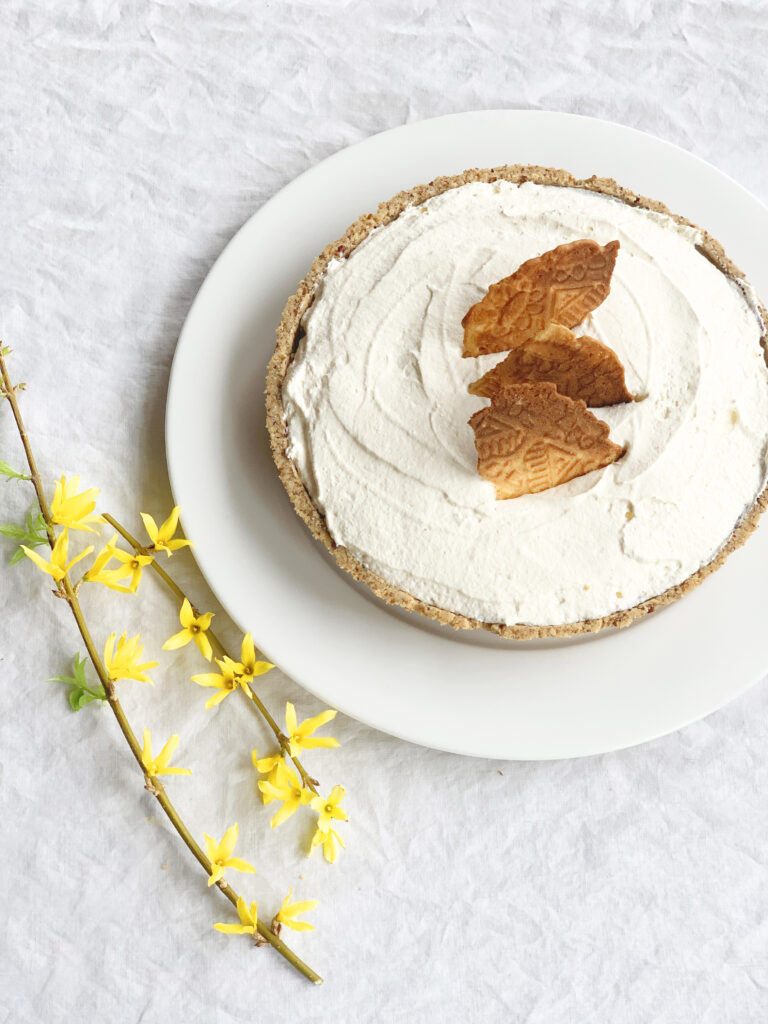
Every cook likes to have a signature dish. It’s even better when it’s a signature dish that family and friends request frequently. Thirteen-year-old Cora Lee was able to make her mark in the kitchen as the family’s “lemon pie girl” after her mother, Norwegian immigrant Olea Torrisdatter Langmoen Lee, taught her the recipe in 1912. It’s been popular with succeeding generations and Lee Olson, who is part of Ingebretsen’s needlework staff, shared her grandmother’s recipe with us.
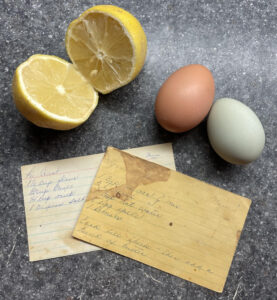
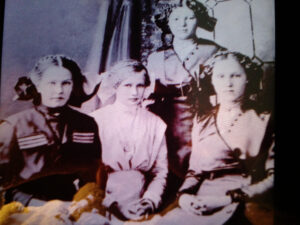
Lee’s mother, Karen Trzebratowski, was extremely helpful and provided me with family history and baking tips. She made the important point that this pie is at the mercy of the lemon you use. Buy the freshest and juiciest one possible. She noted that while it’s hard now to find the perfect lemon, what would it have been like for Cora to find a good one in 1912? And where had Olea found the recipe in the first place? It turns out, thanks to steamships, Sicilian immigrants in New Orleans, Greek families with fruit and candy concessions, and the Milwaukee Settlement House Cookbook, we may have some insights about both those questions. But first, the pie itself.
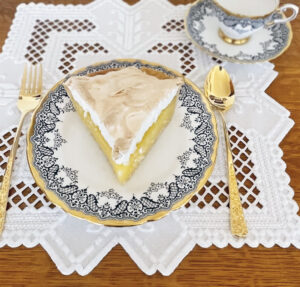
Quick to make. Delicious to eat.
Select your pie crust. We now have the luxury of buying a pre-made crust, though a shortbread pie crust, such as used in most lemon bar recipes, would work well and isn’t time consuming. Budget 15 to 20 minutes to make the lemon filling. Allow an hour for it to come to room temperature and set after you pour it into the pie crust. At this point, you can make, then bake the meringue or make this a no-bake recipe and top it with some whipped cream. In our test baking, Autumn and I opted for a premade walnut crust to keep the recipe gluten-free (Autumn used almond flour for the thickener). The slightly savory walnut crust worked well with the lemon. Popping the pie into the freezer to speed cooling led to a loss of volume. I suggest letting it cool at room temperature, as Cora would have done, or in the refrigerator.
Karen shared the tip that to slice through the meringue neatly, dip the knife blade in hot water. Wipe off the moisture, then cut. A hot knife definitely made for a cleaner cut.
To underscore what an easy, reliable recipe this is, Karen related that while she was traveling in Norway, her husband, who had remained at home, was called upon to make some food for a funeral. He was able to make five lemon pies in an afternoon.
A knob of butter the size of a walnut
Lee notes that the original recipe called for “a knob of butter the size of a walnut.” Oh, the poetry of recipes from an era of home-churned butter and eyeballing measurements. The family now recommends using two tablespoons of butter.

Themes and variations
The lemon pie filling can easily become lemon curd, the delicious topping one associates with tea and scones. Simply add more butter to the recipe until it is almost the desired thickness. I used the filling recipe as the base, then added 4 tablespoons of butter to make it into lemon curd. Cool the mixture before putting it into jars that have been rinsed in hot water. This is to prevent the jar from cracking when being filled. The curd is always slightly thicker after cooling.
A teaspoon of lemon curd is good in a krumkake (recipe below) or on Lois’s Lingonberry Cardamom Scones.
A good lemon was not that hard to find in 1912
When Olea was growing up in Flisa, Norway, her mother would have been well acquainted with the importance of including citrus in the family’s diet. She would have impressed this on her daughter. People knew that citrus was key to preventing scurvy and related diseases since the 1790s, though they didn’t know why. It wasn’t until 1933 that vitamin C was isolated and identified. In the meantime, mothers on both sides of the Atlantic were trying to get citrus into their families’ diets any way they could.
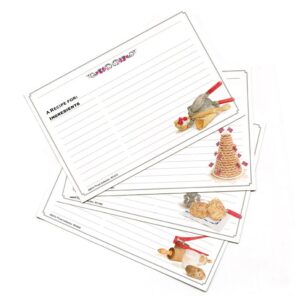
At roughly the same time, Sicilian immigrants to New Orleans were busy establishing a thriving trade in Palermo lemons, reputed to be especially flavorful. Steamships cut the transatlantic passage to 29 days and citrus fruit keeps well. Therefore, fortunes were made and Sicilian-American businessmen were able to expand their trade up the Mississippi River and into the Midwest. The cities of Milwaukee, Chicago, and Minneapolis had growing Greek populations. The immigrants were primarily men from the Peloponnesus region who set up confectionaries, small grocery stores, fruit stands, and fruit distributorships. These businesses bought the fruit brought up by steamship and sold it in more rural areas. The fruit available in 1912 Wisconsin was surprisingly varied and of high quality.
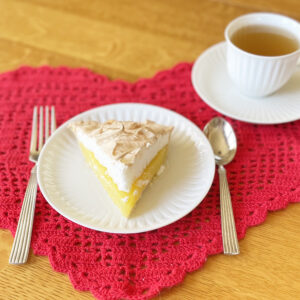
The importance of “The Settlement Cookbook – The Way to a Man’s Heart”
A single cookbook had an enormous impact on the upper Midwest in the early 1900s. The Settlement Cookbook, with the endearing and telling subtitle, “The Way to a Man’s Heart” was written by Mrs. Simon Kander and Mrs. Henry Schoenfeld in 1903. The book reflected the current American diet and influenced it at the same time. It taught immigrant women how to use the new ingredients they encountered and it showed them how to make familiar foods from home in their new environment.
Significantly, the book has recipes for lemonade, lemon whey, lemon syrup, lemon puffs, and five different recipes for lemon pie. Mrs. Kander and Mrs. Schoenfeld were determined to help women keep a flow of citrus-based foods going into their families. Of the five pie recipes, one is quite fussy and another seems improbable. It calls for putting thin slices of lemon into a pie shell, covering them with brown sugar, and baking. The remaining three recipes are similar to Cora Lee’s.
Olea chose wisely
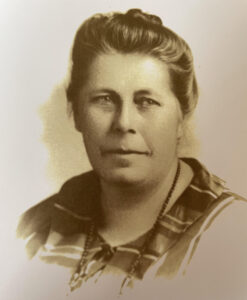
The number of lemon pie recipes printed indicate that this was a popular dessert at the time. This also signals that lemons were reasonably priced, as the authors wanted to present meals that immigrant families could easily afford. Of the variations I read, I favor Cora’s. Her mother set her up for success by giving her a simple, reliable recipe that has great flavor and is very attractive, whether with the meringue or plain. The pie is a lovely yellow naturally, no food coloring necessary. It’s easy to see why it became a family favorite.
The tradition goes on for another generation
Lee and her family are not only continuing to make Cora’s lemon pie, they are also assigning family members a signature recipe. For Lee’s daughter Maya, it’s krumkake. Lee says her daughter hasn’t achieved the level of thinness in her krumkake that she wants. She is still working to perfect her recipe and technique.
Dedication is to be respected. In honor of both family recipes, I’d like to suggest making a krumkake, taking it off the iron and keeping it flat. Quickly cut it into eighths. Garnish each slice of lemon pie with the krumkake wedge. It can be your new tradition with lemon pie.
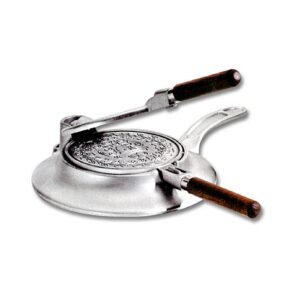
Bringing the story (sort of) full circle
The Boosalis’s are a Greek family who were instrumental in building the restaurant and grocery scene in Minneapolis, starting in the early 1900s., with a fruit stand. One of the many cafes opened along Lake Street by a family member was the Boosalis Cafe, later know as the Avalon Cafe, at 1605 East Lake Street. That address is now Ingebretsen’s Needlework Store. While we have a citrus-scented wool wash, regretfully, we have no lemons. However, if you pop in on a Saturday, you will find Lee there.

The Recipes (PDF version at the bottom of the page)
Lemon Pie from Lee Olson
Ingredients
Baked pie shell
1cup sugar
3 tablespoons flour (all-purpose or a 1-to-1 gluten-free flour blend)
1 cup hot water
2 egg yolks
Juice of one lemon
2 tablespoons of butter
Directions
Mix the sugar and flour together in a sauce pan.
Separate the egg yolks from the whites.
Reserve the egg whites.
Slowly add the hot water, then egg yolks, and the lemon to the sugar and flour.
Cook over medium heat until thick. Stir continuously.
To test when the sauce is ready to be taken off the heat, dip a spatula in the lemon mixture. If the sauce forms a small curtain on the edge of the spatula as it drips, remove the pan from the heat.
Stir in a hunk of butter the size of a walnut.(2 tablespoons)
When the mixture is cool, pour it into a prebaked pie shell.
Beat egg whites until stiff for meringue.
Spread meringue over the filling.
Bake at 350 until meringue is golden.
Krumkake
Recipe courtesy of Heidi Eger, Ingebretsen’s krumkake teacher
4 eggs
1 cup sugar
½ cup melted butter
1 ½ cup flour
½ cup of milk, whipped cream, or cream
½ teaspoon vanilla extract
½ teaspoon cardamom
Heat the krumake iron.
Beat eggs until frothy.
Add sugar and beat until light in color.
Add in melted, cooled butter.
Mix dry ingredients together separately.
Sift into the wet ingredients.
Mix until combined.
Drop 2 teaspoonfuls onto the krumkake iron. Bake as directed.
Roll the hot krumkake on a krumkake roller or a spoon handle. Another option is to let the krumkake remain flat. Once it is cooled, break it into quarters and place in the wedges into slices of the pie when it is served.

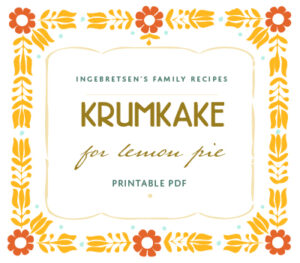
This look delicious! I never thought to use krumkake for a crust, but duh!! I can’t wait to try it.
We tried all sorts of variations, including making little bowls out of the krumkake and filling them with lemon curd. Tasty but crumbly. Have fun!
Please, can you increase the contrast of the letters to the background? It is very difficult to read…. although I know it’s the “Graphics Art” style. The point of the article is to provide information and entertainment. It looks like it would be interesting but…..
This time I gave up.
Linda Gronvall
Linda, thank you for taking the time to comment. We are always looking to improve the blog and your insights help.
The picture at the top looks like a lemon cream refrigerator pie. But the recipe is for a meringue, which is not my family’s favorite. Any recipe for the top one with the krumkake wafers sticking out of it?
Well spotted! Yes, the top picture is the no-cook version. It’s quite simple. Make the lemon filling, put it in the pie crust. Once the filling is room temperature, cover (or just add dollops) of whipped cream. Garnish with krumkake. I will edit the picture caption to make it clear that there are two ways of topping the pie.